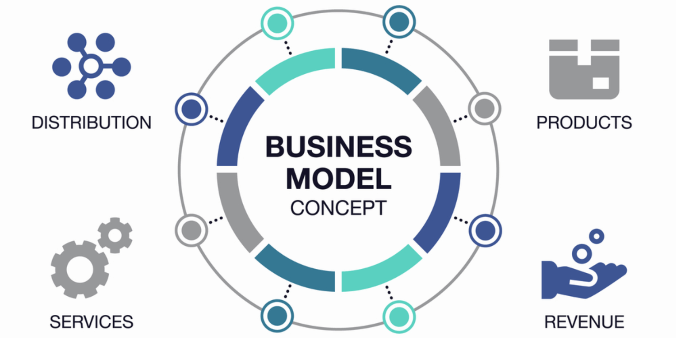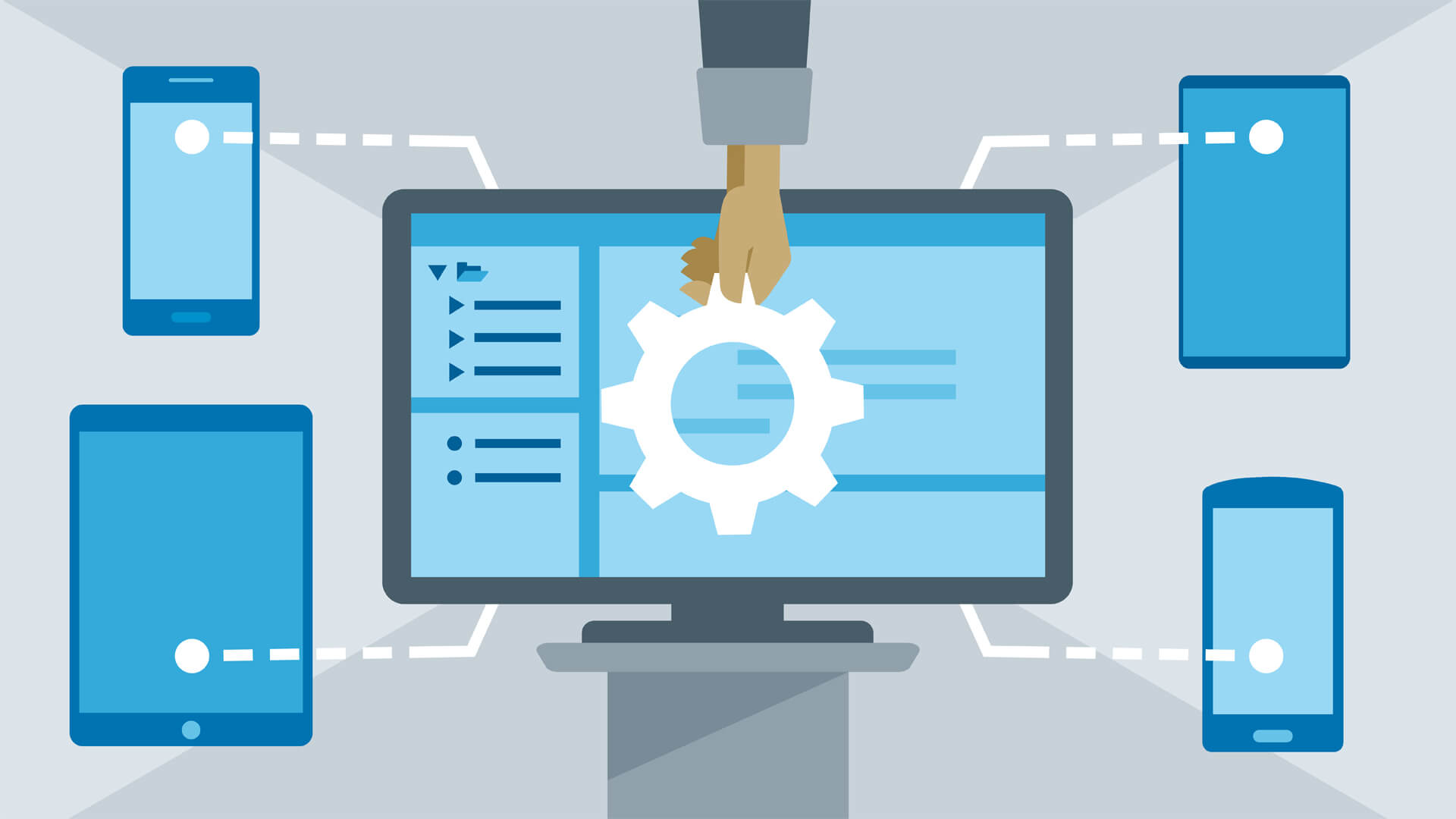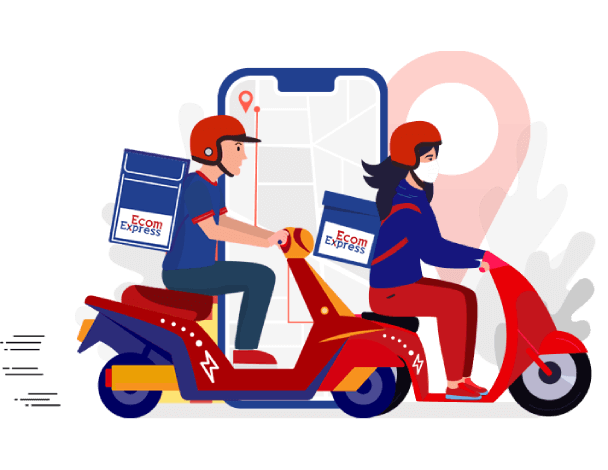The popularity of the Online Food Delivery Business Model has soared in recent years, primarily due to its convenient and accessible nature. As more individuals order food online, entrepreneurs have recognized the tremendous potential for profitability within the food delivery industry. In this comprehensive guide, we will delve into the various facets of the Online Food Delivery Business Model and provide insights on establishing and thriving in this lucrative sector.
Market Analysis

Before launching an online food delivery business, conducting a thorough market analysis is essential to understand the current landscape and identify opportunities for success. Here are vital factors to consider:
Target Market
Determine your target audience based on demographics, such as age, location, and preferences. Consider their ordering habits, average spending capacity, and specific cuisine preferences.
Competitor Analysis
Identify and analyze existing online food delivery platforms in your target market. Evaluate their strengths, weaknesses, pricing strategies, delivery options, customer service, and unique selling points. This analysis will help you identify gaps and differentiate your business.
Market Size and Growth
Assess the online food delivery industry's overall market size and growth potential in your target region. Consider factors such as the increasing adoption of smartphones, busy lifestyles, and the demand for convenience.
Regulatory Environment
Familiarize yourself with local regulations, licenses, permits, and food safety requirements for an online food delivery business. Ensure compliance with applicable laws to avoid legal issues.
Technology and Infrastructure
Evaluate the availability and reliability of technology infrastructure, including internet connectivity and mobile usage rates, to ensure seamless online ordering and delivery operations.
Partnerships
Research potential partnerships with local restaurants, cloud kitchens, or grocery stores to expand your menu offerings and ensure a reliable supply chain. Collaborating with popular and well-established food establishments can enhance your brand reputation.
Customer Feedback and Reviews
Study customer feedback and reviews of existing online food delivery platforms to understand common pain points and areas for improvement. Use this information to develop a superior customer experience.
Pricing and Profitability
Analyze pricing models, commission structures, and delivery charges in the market. To determine profitability, calculate costs, including food preparation, packaging, delivery personnel, marketing, and technology expenses.
Trends and Innovation
Stay updated on emerging trends and innovations in the online food delivery industry, such as drone delivery, sustainable packaging, or AI-powered recommendation systems. Incorporate relevant technologies or practices to stay competitive.
You can gain valuable insights into your target market, competitors, customer preferences, and industry trends by conducting a comprehensive market analysis. This information will guide your business strategy and help you make informed decisions to establish a successful online food delivery business.
Business Model

The success of an online food delivery business hinges on a well-defined and efficient business model. Here are the key components to consider when building your business model:
Value Proposition
Clearly define the unique value your online food delivery service offers customers. This could include various restaurant options, fast and reliable delivery, user-friendly ordering platforms, or exclusive deals and promotions.
Customer Segments
Identify and target specific customer segments based on their preferences, demographics, and ordering behavior. For example, you may cater to busy professionals, families, or college students.
Restaurant Partnerships
Establish partnerships with diverse restaurants to offer customers a wide selection of cuisines and dining options. Negotiate commission rates and terms that are mutually beneficial for both parties.
Ordering Platform
Develop an intuitive and user-friendly online platform (website and/or mobile app) that lets customers easily browse menus, place orders, and track delivery status. Ensure the platform is compatible with multiple devices and offers secure payment options.
Delivery Logistics
Create a robust infrastructure to ensure timely and efficient order fulfillment. This may involve hiring delivery personnel, investing in delivery vehicles, or partnering with third-party logistics providers for last-mile delivery.
Pricing and Revenue Streams
Determine your pricing strategy, considering factors such as menu prices, delivery fees, and any additional charges. Typical revenue streams include restaurant commissions, delivery fees, and potential advertising or premium restaurant listing options.
Marketing and Promotion
Develop a comprehensive marketing strategy to build brand awareness and attract customers. Utilize online advertising, social media campaigns, referral programs, and partnerships with influencers or local communities to promote your service.
Customer Service
Prioritize excellent customer service to enhance customer satisfaction and loyalty. Offer responsive support channels, handle complaints effectively, and collect customer feedback to continuously improve your service.
Data Analytics
Utilize data analytics tools to gain insights into customer preferences, ordering patterns, and trends. This data can inform menu optimizations, personalized recommendations, and targeted marketing campaigns.
Continuous Innovation
Stay ahead of the competition by continuously innovating and improving your service. Experiment with new technologies, delivery methods, or value-added features to differentiate your business and adapt to evolving customer demands.
It's important to note that the specific details of your business model will depend on various factors, such as your target market, geographic location, and available resources. Regularly evaluate and refine your business model based on market feedback and performance metrics to ensure long-term success in the competitive online food delivery industry.
Business Registration and Licensing

Choose a Legal Structure
Select the most suitable legal structure for your business, such as a sole proprietorship, partnership, limited liability company (LLC), or corporation. Consult with a legal professional or business advisor to determine the best option based on your circumstances.
Business Name Registration
Choose a unique and memorable name for your online food delivery service and check its availability for registration. Register the business name with the appropriate government agency or local authority responsible for business registrations in your jurisdiction.
Obtain Necessary Permits and Licenses
Research and obtain the required permits and licenses to operate an online food delivery business. These may include a general business license, food service permit, health department clearance, and any specific food handling, delivery, or commercial kitchen licenses.
Tax Registration
Register your business for tax purposes. Obtain an Employer Identification Number (EIN) or Tax Identification Number (TIN) from the relevant tax authorities. Familiarize yourself with tax obligations, such as sales tax or value-added tax (VAT), and ensure compliance with tax regulations.
Food Safety and Health Regulations
Adhere to food safety and health regulations to ensure the quality and safety of the food you deliver. Follow guidelines for proper food handling, storage, packaging, and transportation. Comply with any local health department requirements, inspections, and certifications.
Insurance Coverage
Protect your business and mitigate potential risks by obtaining appropriate insurance coverage. Consider liability insurance, workers' compensation insurance (if you have employees), and commercial vehicle insurance (if you own or operate delivery vehicles).
Employment and Labor Laws
Familiarize yourself with employment and labor laws in your jurisdiction. Understand the obligations and rights of your employees, including minimum wage, working hours, overtime, and benefits. Comply with employment tax regulations and maintain accurate employee records.
Intellectual Property Protection
Consider protecting your brand identity, logos, and other intellectual property by registering for trademarks, copyrights, or patents, if applicable. Consult an intellectual property attorney to understand the best way to safeguard your business assets.
Compliance with Data Privacy and Security
If you collect and store customer data, ensure compliance with privacy laws and regulations. Implement appropriate measures to protect customer information and maintain data security.
Ongoing Compliance and Renewals
Regularly review and comply with any updates or changes to regulations, permits, or licenses. Stay informed about deadlines for renewals and ensure all necessary documentation and fees are submitted on time.
It is essential to consult with legal and regulatory experts or professionals who specialize in business licensing in your specific jurisdiction. They can provide guidance tailored to your location and help ensure your online food delivery service operates within the legal framework.
Platform Development

Developing a robust and user-friendly platform is crucial for the success of your online food delivery service. Here are the critical steps involved in platform development:
Define Requirements
Determine the specific features and functionality you want your platform to have. Consider user registration and login, restaurant listings and menus, search and filtering options, order placement and tracking, payment processing, customer reviews and ratings, and customer support channels.
Choose a Technology Stack
Select the appropriate technology stack based on your platform's requirements and scalability needs. This includes choosing a programming language, frameworks, databases, and any third-party tools or APIs you plan to integrate, such as payment gateways or map services for delivery tracking.
User Interface (UI) and User Experience (UX) Design
Design an intuitive and visually appealing user interface that enhances the user experience. Ensure easy navigation, clear call-to-action buttons, and responsive design to accommodate different devices and screen sizes. Pay attention to usability, accessibility, and the overall flow of the platform.
Restaurant and Menu Management
Develop a system that allows restaurants to create and manage their profiles, including uploading menus, setting pricing, updating availability, and managing orders. Implement a user-friendly dashboard for restaurants to monitor and process incoming orders efficiently.
Order Placement and Tracking
Build a seamless order placement system that enables users to browse restaurant menus, select items, customize orders, and choose delivery options. Implement real-time order tracking to provide users with updates on the status of their orders and estimated delivery times.
Payment Processing
Integrate secure and reliable payment processing systems that support various payment methods, including credit/debit cards, digital wallets, or cash on delivery. Implement robust security measures to protect sensitive customer information.
Customer Reviews and Ratings
Create a system for customers to leave reviews and ratings for restaurants and delivery experiences. Consider implementing moderation features to ensure the authenticity and appropriateness of reviews.
Customer Support and Feedback
Incorporate channels for customer support, such as live chat, email, or phone, to address inquiries, complaints, or issues promptly. Provide a mechanism for customers to provide feedback on their experiences to help improve your service.
Mobile App Development
Consider developing a mobile app in addition to the web platform to tap into the growing mobile user base. Ensure the app is available for both iOS and Android platforms, with similar features as the web platform.
Testing and Quality Assurance
Conduct rigorous testing to identify and resolve any bugs, errors, or usability issues. Perform functional testing, compatibility testing across different devices and browsers, and security testing to ensure the platform's stability and reliability.
Launch and Iteration
Once your platform is developed and tested, launch it publicly. Gather user feedback and monitor platform performance closely. Continuously iterate and improve the platform based on user insights, market trends, and emerging technologies.
Remember to prioritize data security and privacy throughout development and comply with relevant regulations, such as the General Data Protection Regulation (GDPR) or local data protection laws.
Consider engaging a skilled development team or partnering with a reputable software development company like Ways Software Technologies LLP, experienced in building online food delivery platforms. Their expertise can help ensure a smooth and successful development process for your online food delivery service.
Restaurant Partnerships

Establishing partnerships with restaurants is crucial to running a successful online food delivery service. These partnerships allow you to offer diverse cuisines and expand your menu options. Here are the critical steps involved in forming restaurant partnerships:
Identify Target Restaurants
Research and identify restaurants that align with your target market and customer preferences. Consider factors such as popularity, menu variety, quality of food, and willingness to participate in online food delivery services.
Approach Restaurants
Reach out to potential partner restaurants to introduce your online food delivery service and explain the benefits of collaboration. Highlight the increased exposure, customer reach, and additional revenue streams that are partnering with your platform can offer.
Negotiate Terms
Discuss and negotiate partnership terms with the restaurants, including commission rates, delivery fees, and any other financial arrangements. Establishing a mutually beneficial agreement that aligns with the restaurant's business model and your platform's profitability is essential.
Streamline Menu Integration
Develop a streamlined process for integrating restaurant menus into your platform. This may involve coordinating with the restaurant's staff to collect menu information, including item descriptions, prices, dietary information, and images. Ensure that the menu items are accurately represented on your platform.
Optimize Delivery Operations
Work closely with the restaurants to establish efficient delivery operations. Determine whether the restaurant will handle deliveries in-house or if you will provide delivery personnel. Define delivery zones, estimated delivery times, and specific delivery requirements or protocols.
Provide Marketing Support
Collaborate with partner restaurants to promote their offerings and attract more customers. This can include featuring them prominently on your platform, running joint marketing campaigns, or offering exclusive deals and promotions.
Maintain Strong Communication
Foster strong communication channels with your restaurant partners. Regularly check with them to address concerns, gather feedback, and ensure smooth operations. Establish a reliable support system to address any issues that may arise promptly.
Continuous Evaluation and Expansion
Continuously evaluate the performance of your restaurant partnerships. Monitor customer feedback, delivery times, and overall customer satisfaction. Based on these insights, consider expanding your restaurant network by adding new partners or adjusting existing partnerships.
Build Long-term Relationships
Focus on building long-term relationships with your partner restaurants. By nurturing these relationships, you can foster loyalty, encourage repeat business, and create a strong network of trusted partners.
Contractual Agreements
Consider drafting formal agreements or contracts with your restaurant partners to outline both parties' terms, responsibilities, and expectations. Consult with legal professionals to ensure that these agreements are fair, legally binding, and protect the interests of all parties involved.
Remember, maintaining strong and collaborative partnerships with restaurants is vital to providing a quality dining experience to your customers. Working closely with your partners can create a win-win situation that benefits your online food delivery service and the participating restaurants.
Delivery Partnerships

Forming delivery partnerships is critical to running a successful online food delivery service. These partnerships enable you to ensure timely and efficient delivery of orders to your customers. Here are the critical steps involved in establishing delivery partnerships:
Identify Potential Delivery Partners
Research and identify potential partners that align with your business model and target market. Consider their delivery capabilities, coverage area, reputation, and reliability.
Assess Delivery Capabilities
Evaluate the delivery partner's infrastructure, including the number of delivery personnel, vehicles, and technology systems in place. Ensure they can handle the expected volume of orders and meet your service level requirements.
Reach Out and Establish Contact
Contact potential delivery partners to express your interest in collaborating. Provide an overview of your online food delivery service, highlighting the benefits of partnership and the potential for increased business for both parties.
Negotiate Partnership Terms
Discuss and negotiate the terms of the partnership with the delivery partners. Consider factors such as delivery fees, service level agreements, performance metrics, and any specific requirements or expectations you have for order fulfillment.
Set Clear Expectations
Communicate your delivery requirements, including expected delivery times, packaging standards, and any specific protocols or instructions. Ensure the delivery partner understands your brand values and the importance of delivering a positive customer experience.
Coordinate Integration
Work closely with the delivery partner to integrate their services into your platform. This may involve technical integration, such as connecting their systems with your ordering and tracking platform, to streamline order flow and ensure real-time updates.
Training and Onboarding
Provide the delivery partners with necessary training and onboarding support. This may include familiarizing them with your platform, explaining order management processes, and ensuring they understand your service standards and customer expectations.
Performance Monitoring
Regularly monitor the performance of your delivery partners. Track key metrics such as on-time delivery rates, customer satisfaction ratings, and any issues or complaints reported by customers. Address any performance gaps or concerns promptly to maintain a high level of service quality.
Continuous Communication
Maintain open lines of communication with your delivery partners. Establish a regular feedback mechanism to discuss performance, address concerns, and identify areas for improvement. Cultivate a collaborative and mutually beneficial relationship.
Expansion and Scaling
As your online food delivery service grows, consider expanding your network of delivery partners to accommodate increased order volumes or extend coverage to new areas. Continuously evaluate the need for additional partnerships based on demand and market dynamics.
Legal Considerations
Depending on your jurisdiction, it may be necessary to have contractual agreements or legal arrangements with your delivery partners. Consult with legal professionals to ensure compliance with local laws, regulations, and liabilities.
By forging strong delivery partnerships, you can ensure a reliable and efficient delivery experience for your customers. Effective coordination, clear communication, and performance monitoring are vital to maintaining a successful and sustainable delivery network for your online food delivery service.
Marketing and Promotion

Effective marketing and promotion are essential for attracting customers and generating awareness for your online food delivery service. Here are key strategies and tactics to consider:
Develop a Strong Brand Identity
Create a unique and memorable brand identity that reflects your service offerings and resonates with your target audience. Design a compelling logo, choose appropriate brand colors, and develop a consistent visual identity across all marketing materials.
Targeted Digital Advertising
Utilize targeted digital advertising to reach potential customers. Consider using platforms such as Google Ads, social media advertising (Facebook, Instagram, Twitter), and display advertising to promote your service and drive traffic to your website or app.
Search Engine Optimization (SEO)
Optimize your website and online content for search engines to improve your visibility in organic search results. Focus on relevant keywords, create high-quality content, and ensure your website is optimized for mobile devices.
Social Media Presence
Leverage the power of social media to engage with your audience, showcase your restaurant partners and menu offerings, and run targeted ad campaigns. Create engaging and shareable content, encourage user-generated content, and actively respond to customer inquiries and feedback.
Influencer Partnerships
Collaborate with influencers, bloggers, or food enthusiasts with a significant following and influence in your target market. Partner with them to promote your service, provide reviews or recommendations, and offer exclusive discounts or promotions to their followers.
Referral Programs
Implement referral programs to encourage your existing customers to refer your online food delivery service to their friends and family. Offer incentives such as discounts, credits, or free deliveries for successful referrals.
Email Marketing
Build an email list of interested customers and regularly send newsletters or promotional emails. Provide personalized offers, highlight new restaurant partners or menu items, and share exclusive deals to keep customers engaged and encourage repeat orders.
Local Partnerships and Sponsorships
Collaborate with local businesses, community events, or organizations to increase your brand visibility. Sponsor local events, offer catering services, or participate in community initiatives to establish yourself as a trusted and active community member.
Loyalty Programs
Implement a loyalty program to reward and retain your existing customers. Offer loyalty points for every order, provide special discounts or perks for frequent customers, and communicate the benefits of being loyal.
Customer Reviews and Ratings
Encourage satisfied customers to leave positive reviews and ratings on your platform or popular review websites. Display testimonials and ratings prominently to build trust and credibility among potential customers.
Analyze & Optimize
Endlessly observe and analyze performance of marketing efforts. Observe key metrics like customer acquisition, conversion rates, order frequency, and customer feedback. Use these insights to refine your marketing strategies and optimize your campaigns for better results.
Remember to regularly evaluate and adjust your marketing strategies based on customer feedback, market trends, and the performance of different marketing channels. By employing a comprehensive marketing and promotion approach, you can effectively reach your target audience, build brand awareness, and drive customer engagement for your online food delivery service.
Customer Support

Providing excellent customer support is crucial for maintaining customer satisfaction and loyalty in your online food delivery service. Here are key strategies and practices to ensure adequate customer support:
Multiple Communication Channels
Offer multiple channels for customers to contact your customer support team. This can include phone support, email support, live chat, or social media messaging. Ensure these channels are easily accessible and prominently displayed on your website or app.
Responsive and Timely Responses
Aim to respond to customer inquiries and issues promptly. Set clear response time goals and ensure that your customer support team is equipped to handle a high volume of inquiries efficiently. Use automated responses or chatbots to acknowledge customer queries and provide initial assistance when applicable.
Knowledgeable Support Team
Train your customer support team to have in-depth knowledge about your online food delivery service, including restaurant partners, menu items, ordering process, and delivery operations. Ensure they can handle customer concerns like order changes, refunds, or special requests.
Personalized Assistance
Strive to provide personalized assistance to customers. Address them by name, reference their previous orders or inquiries, and demonstrate a genuine understanding of their specific concerns. This personal touch can enhance customer satisfaction and build a stronger relationship.
Clear and Transparent Communication
Communicate information clearly and transparently to customers. Provide accurate and detailed information about delivery times, order status, and any changes or delays. Proactively communicate any disruptions or issues that may impact the customer's experience.
Resolving Complaints and Issues
Handle customer complaints and issues professionally and empathetically. Listen actively to their concerns, offer genuine apologies for any mistakes or mishaps, and provide appropriate solutions or compensation when necessary. Strive to turn negative experiences into positive ones.
Customer Feedback and Surveys
Encourage customers to provide feedback on their experience with your service. Offer surveys or feedback forms to gather insights on areas for improvement. Review and analyze this feedback to identify patterns or joint issues and make necessary adjustments to your service.
Continuous Improvement
Regularly review and assess your customer support processes and performance. Analyze metrics such as response times, customer satisfaction ratings, and issue resolution rates. Identify areas for improvement and implement necessary training, process changes, or system enhancements to enhance customer support efficiency.
24/7 Support (If Applicable)
Consider offering 24/7 customer support, mainly if your online food delivery service operates around the clock. This ensures that customers can reach out for assistance anytime, providing them with peace of mind and support when needed.
Customer Support Documentation
Create a comprehensive knowledge base or FAQ section on your website or app. Provide self-help resources, such as step-by-step guides, troubleshooting tips, and answers to frequently asked questions. This empowers customers to find solutions independently, reducing the need for direct customer support contact.
Training and Empowerment
Train and empower your customer support team to deliver exceptional service. Keep them updated on your online food delivery service's new features, policies, or changes. Please provide them with the tools, resources, and authority to resolve customer issues effectively.
Remember that customer support is vital in shaping the overall customer experience. You can build trust, loyalty, and positive word-of-mouth for your online food delivery service by providing prompt, personalized, and empathetic support.
Conclusion
In conclusion, this comprehensive guide has provided valuable insights into the online food delivery business model, covering various aspects from market analysis to customer support. We have explored the importance of thorough market research, the steps involved in business registration and licensing, platform development, restaurant and delivery partnerships, marketing and promotion strategies, and effective customer support practices.
As the demand for online food delivery continues to grow, entrepreneurs must understand the intricacies of this dynamic industry. By leveraging the information and strategies discussed in this guide, you can position yourself for success and capitalize on the lucrative opportunities the online food delivery business model offers.
Whether you are an aspiring entrepreneur looking to start your online food delivery service or an existing business owner seeking to optimize and expand your operations, implementing the right strategies and best practices will be vital to standing out in a competitive market.
Now is the time to take action and embark on your journey in the online food delivery space. Equip yourself with the knowledge and resources in this guide, adapt them to your specific business needs, and embark on your path toward building a successful and thriving online food delivery venture.
Remember, success in this industry is only achieved after a while. It requires dedication, continuous learning, and a customer-centric approach. With the right mindset and a commitment to excellence, you can establish a reputable brand, attract a loyal customer base, and contribute to the evolving landscape of the online food delivery industry.
So, what are you waiting for? Start implementing these strategies, adapt to market trends, and make your mark in the online food delivery business!
If you have any further questions or need assistance, don't hesitate to contact Ways Software Technologies LLP. Our team of experts is here to support you on your journey to success.
Let's embrace the online food delivery revolution and build a thriving business together!
Comments 03

Carole Marvin.
15 january 2023 At 10:30 pm
Ne erat velit invidunt his. Eum in dicta veniam interesset, harum fuisset te nam ea cu lupta definitionem.
reply
Jaquan Rolfson.
15 january 2023 At 10:30 pm
Ne erat velit invidunt his. Eum in dicta veniam interesset, harum fuisset te nam ea cu lupta definitionem.
reply
Rik Andrew
15 january 2023 At 10:30 pm
Ne erat velit invidunt his. Eum in dicta veniam interesset, harum fuisset te nam ea cu lupta definitionem.
reply